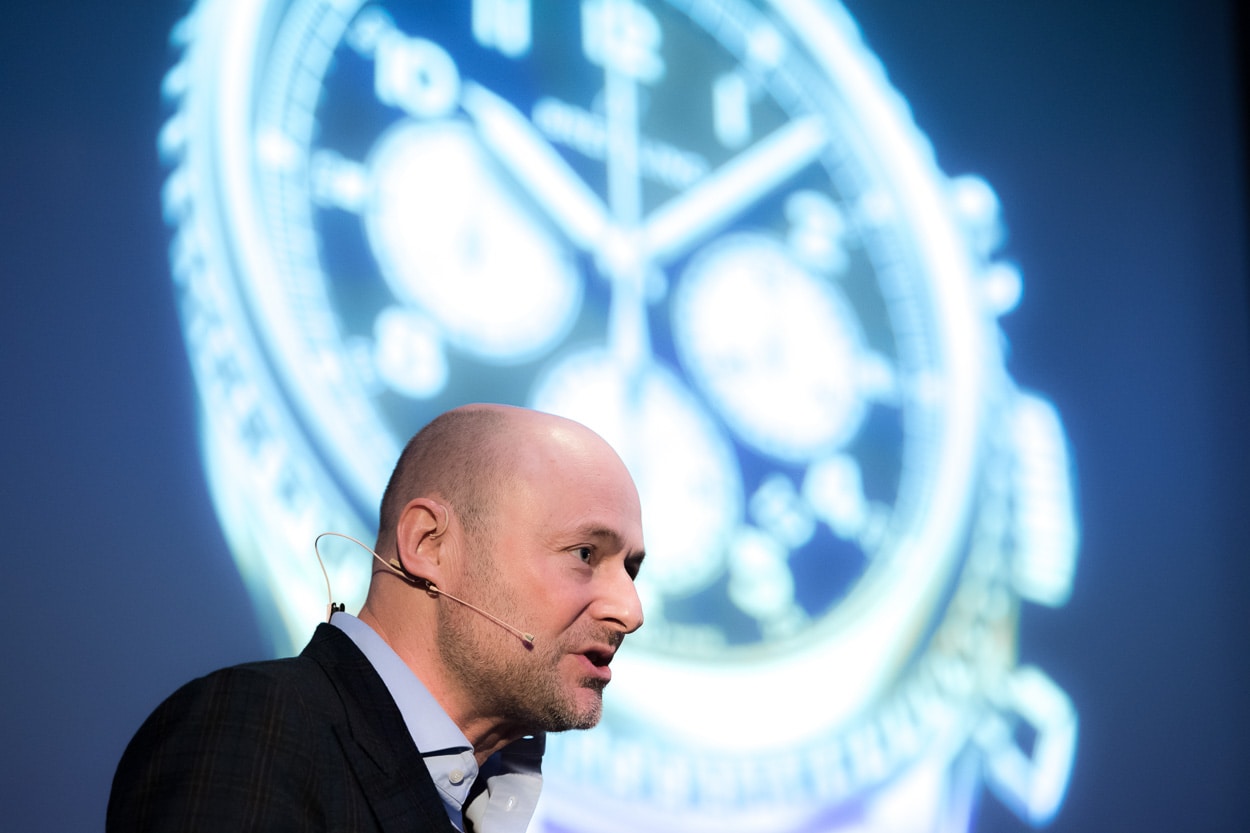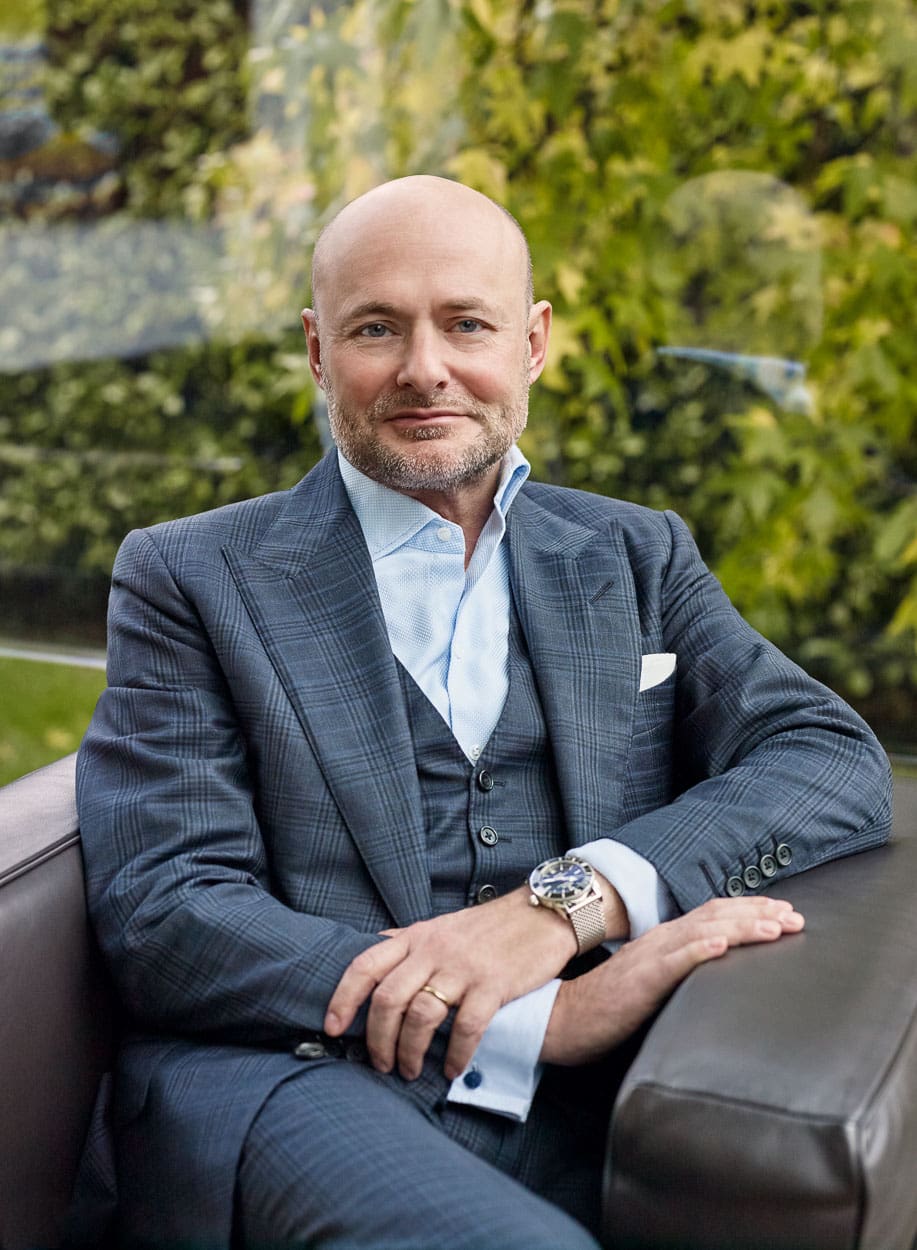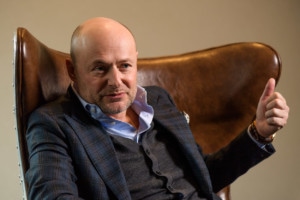Interview With Breitling CEO Georges Kern in Zurich
Just recently, we were invited to join the Breitling Roadshow in Zurich, Switzerland. Besides listening to CEO and shareholder Georges Kern during his presentation and gala diner about the future of Breitling, receiving a lesson or two in design by Guy Bove and an amazing history class by Fred Mandelbaum, I sat with Georges Kern to ask him some questions. About the future of Breitling, the collections, selling on-line and certified pre-owned Breitling watches as well as his personal instagram account, on which he has become very active.
Without further ado.
Georges Kern Interview
Robert-Jan Broer: What are your most important goals for Breitling?
Georges Kern: Globally, the goal is to build out of a successful brand an even more successful brand by bringing it to the next level. The brand is clearly positioned as a pilots’ watch brand. It is tremendously successful in the US and in Europe. It has a solid foundation, is financially healthy, and highly profitable. Based on that, the question is: What do we do next and how can we turn this into a truly global brand with a wider offering within its existing price range? That’s the challenge and that’s where we put our efforts in.
RJB: Are you not afraid to offer too much? To lose identity or a red line in the collection?
GK: That’s a very good question. It shows how confusing the whole situation is. Dilution is generally due to the fact that there is no clear segmentation in the product portfolio. Extending into an elegant or female segment would not be dilution. It’s like saying that Range Rover was diluted when Tata took over and they launched the Evoque. That’s smart brand building with a good corporate identity and design. This is what we’re doing. Building a brand with defined and structured product lines and clear segmentation, but which is also compact and readable – this is what we have to do to avoid dilution. In a year, the brand will be clearly defined but broader positioned. .
RJB: What’s your view on selling on-line?
GK: We want to pursue an omni-channel strategy: that means we will work with retailers, establish our own website and collaborate with online-platforms. like Mr. Porter. At the end of the day, the consumers doesn’t care where they buy their Breitling watches. We have to offer them a multitude of possibilities to access the brand. This is our community and the reality of the market. We are relaunching our website and we will launch our e-commerce worldwide in a couple of months, including in China. By the way, digital transformation doesn’t simply mean e-commerce; it also includes the question of how to communicate with the client, how to service the client, how to interact with the client through call centers or marketing. This is what we need to address and align. Our product will stay analogue, but the environment around our analogue watches has to reply to a digital world.
RJB: Will you perhaps in the future also sell pre-owned or vintage Breitling watches yourself as a company?
GK: You have to differentiate between two things: pre-owned and vintage watches, which are not at all the same. There’s an urgent need to structure the secondary market, which today is totally dominated by the grey market, where the consumer doesn’t know what he’s actually buying. The watches through these channels are not certified by the supplier and you don’t know if you are buying a fake watch or a watch with a defect, etc. There is no secondary market controlled by the brands like there is in the car industry with certified products. We need to step in as a supplier and support authorized partners who want to sell pre-owned watches and we also have to build up our own structures in order to prevent grey market. In addition you also have to include trade-ins. Somebody buys a watch and then after three years decides to go back to a store and says, “I would like a new Breitling now. Can I trade in my watch?” Then it’s pre-owned. We are currently talking to many partners and are confident to soon come up with our own solution since pre-owned watches will play an important role in Breitling’s future.
RJB: Which brand do you consider as the brand in pilot’s watches?
GK: The brand with the strongest association and history and the largest number of historical products is, by far, Breitling. It is the pilot’s watch brand par excellence. Our travel exhibition illustrates this perfectly. It includes, by the way, the board instruments that Breitling produced in the 30s and 40s, and all the pilot’s watches that are in our assortment. We are the specialists. This is the biggest equity. And this is why we launched the Navitimer 8 – the current pilots’ watches are very modern, elegant and classic – exactly what the brand was missing and I think the Navitimer 8 fills that gap in the offering. Whatever we do, I always want to have a modern Breitling pilot’s watch and a more traditional Breitling pilot’s watch, as well as a modern diver’s watch and a more traditional diver’s watch. We are building upon our history, which offers much more than only pilots’ watches.
RJB: This morning I noticed the lifestyle elements included in your mood boards for sea, land and aviation. Could you say that the Navitimer 8 is more for people who want the style of a pilot’s watch and the traditional Navitimer 1 or B-01 is like a purist’s watch?
GK: You could say that. It’s a totally different design. For some, the Navitimer 1 is too crowded. With the slide rule bezel it’s a tool watch. They want clean designs. And you can have a traditional pilot’s watch with a clean design, with a rotating bezel, but just as a marker, as a pointer for distance and time and whatever you need. You are targeting a different clientele.
RJB: Which question has not been asked today, but should be answered nevertheless?
GK: I am convinced that every possible question has been raised today.
RJB: There’s no subject that has not been touched today that you think is interesting?
GK: No, I think, everything has been discussed. And what we are trying to do, not only for you and the colleagues from the press, but also for the retailers, is to give you as much information as possible to understand where we’re going. This is a problem with digital: for example, when you launch a product, people see one model, one execution at a certain moment in time. And this is a very small cutout of a universe. Nothing at Breitling is done by chance. I would say that by the end of the year, people will have a clear and tangible understanding of who we are and what we stand for.
RJB: On quite a few Instagram posts these days you see also negative comments. How do you deal with keyboard warriors, that have all these opinions based on the little snippets they see?
GK: First of all we respect other opinions and frankly speaking some of the post are very inspiring But when you post a novelty and you have five negative comments amongst 800 or 900 likes, you have to put it into perspective.
RJB: That’s true. But it can feel annoying sometimes.
GK: If it’s insulting, I delete it from my Instagram account. That’s the beauty of managing your own account. But if it’s a smart comment . . . it can happen that I change my mind on a couple of things, based on feedback or interesting comments I’ve had from social media. But fundamentally, I think everybody agrees with the vast majority. And at the end of the day, the consumers decide. But what is also very interesting when looking into social media at Breitling is that we have two totally different communities. We have Fred Mandelbaum, the collectors, the vintage guys, who are in love with the traditional beautiful designs and chronographs, etc. I am also part of that group. When I joined the company I was bombarded with messages like: “Please, stop all the big watches. Stop all the polished watches. Stop this advertising campaign. This is not Breitling.” And then we have the current Breitling owners, who are telling me: “Why do you launch small and classical watches? They don’t reflect the Breitling image.” And I think that when you create a really strong brand, your aim should be to have fans who love both the vintage and the current products with all the stories of the brand. I’d come back to a good illustration from the car industry: look at Range Rover. Range Rover was a big car, a four-wheel-drive. The Queen used to drive it through the countryside. But it was a little bit single-minded, very niche and bulky. Now the guys from Tata came and changed it and launched the Evoque and even developed a new Evoque convertible, which, by the way, targets women. And with it, it became a very cool brand. They are not only offering big four-wheel-drives – they kept them – but they have other offerings under one strong brand umbrella. And we are not here to do more of the same. We will keep the oversize products for which Breitling is known, but we need to add new elements, if we want to build a truly global, international brand. And for me Range Rover is a good example on how brand building should work. It shows how a brand can became attractive for a much bigger consumer-base than in the past without diluting the brand. To come back to your first question: dilution is making the same product in 50 different executions. And this is exactly what we want to avoid. We want to have a strong versatile brand, with a strong brand umbrella.
RJB: Thank you for your time!
More information on Breitling via the official website.



